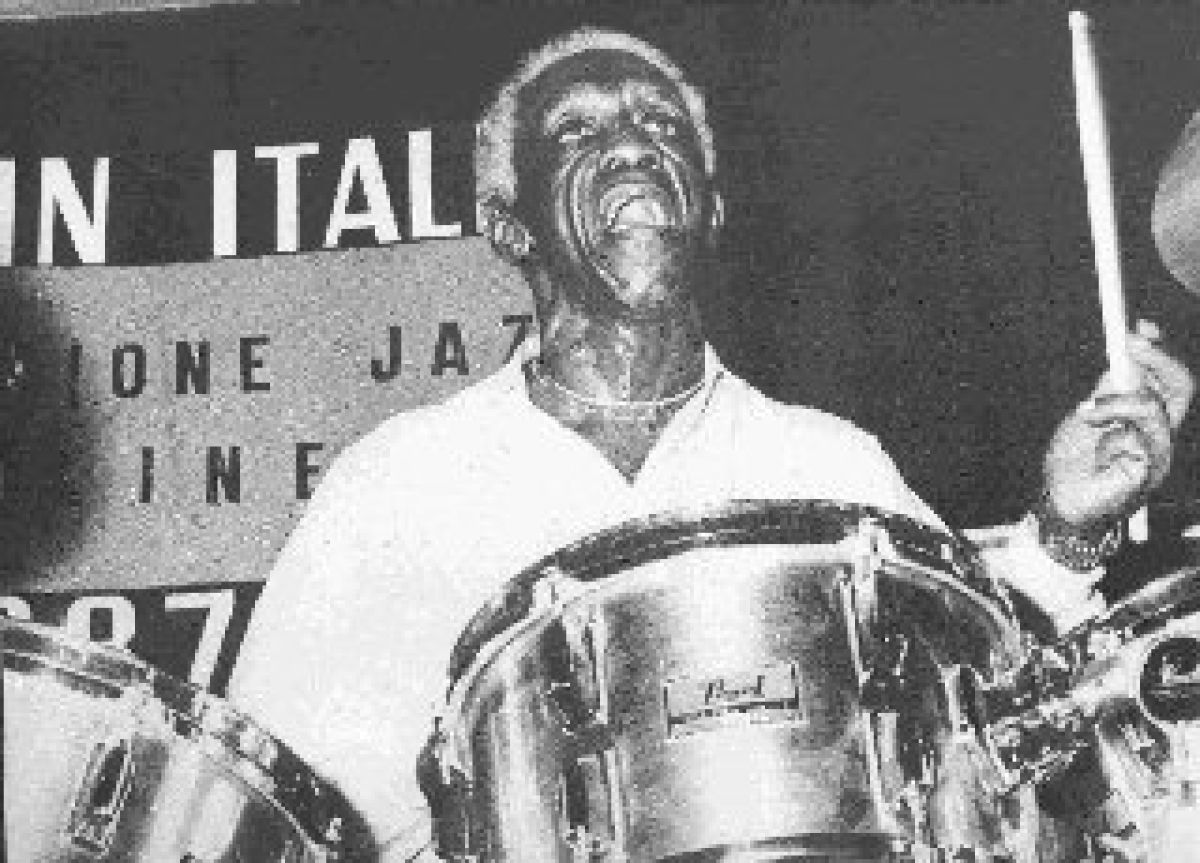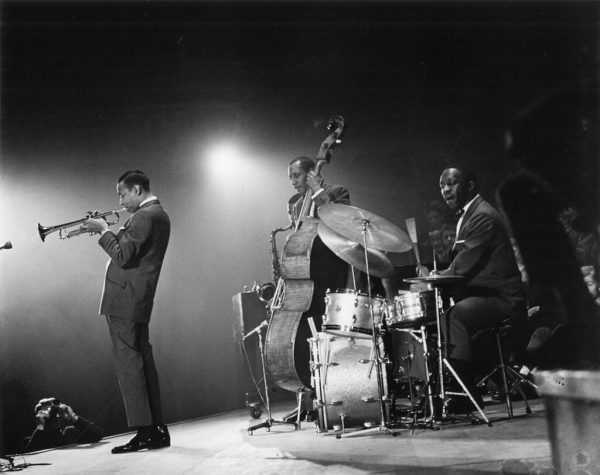The Innovator, The Jazz Messenger, The Freedom Rider: A Century of Art Blakey
By Will Stonier

‘The Freedom Rider’, taken from the record of the same name, is the beat to the Civil Rights Movement; a collage of polyrhythm, a one-man percussive orchestration. There is no air between Art Blakey’s beats until the very end of the recording, a solo-piece extending beyond 7-minutes, when the membrane of the drum — secured by the rim of the snare — is finally permitted to exhale. Art Blakey’s sonic world becomes unleashed from the end of his drum sticks.
On October 11th Art Blakey would have turned 100 years old. Born in 1919 in Pittsburg, Pennsylvania, Blakey was originally not a drummer. After an incident in a nightclub where, as legend states, Blakey refused to make way at the piano for Errol Garner, an incident which resulted in Blakey being held at gunpoint, Blakey decided to switch to the drum sticks.
He went on to cut his teeth as a drummer with the likes of Dizzy Gillespie and Charlie Parker, themselves jazz iconoclasts who refused to conform to traditional notions of jazz that catered to musicians such as Garner. Parker and Gillespie, the vanguards of modern jazz, instilled in Blakey a core dynamism and spinal charge that would become central to his music. The confrontation with Garner, though, is a manifestation of two opposing jazz pedagogies: Garner, a virtuoso in his own right, sure, would go on to be held back by the maximalist muscle of Blakey and bebop.
Though Blakey emerged from the rebellious tradition of bebop, it was not the subgenre of jazz in which he would flourish. In 1956, in collaboration with pianist Horace Silver, The Jazz Messengers was formed. The Jazz Messengers become synonymous with the name Art Blakey and the subgenre now labelled hard-bop. The group saw a constant oscillation of members with the only constant being Blakey himself, with the group ending when Blakey died in 1990.
From the late 1950s to the mid ‘60s, the group released a number of seminal hard-bop recordings on legendary Blue Note records, including: The Big Beat, Mosaic, Free For All and, in 1959, the most iconic of all: Moanin’, where Art Blakey’s hard-swinging style exhibits itself at the forefront of an emerging rhythm section. The title track is now a weathered jazz standard — rightly so — but often unappreciated is ‘The Drum Thunder Suite’. It is clear, when listening, why Blakey’s contemporary Max Roach — a drummer who also arose from bebop — didn’t affectionately nickname Blakey as ‘Thunder’ for nothing. Blakey’s now seminal records from this period are not just owned and listened to by jazz anoraks — sitting covered in dust as museum pieces — but also used by beat-makers and producers — look no further than Madlib for evidence of this.
In the 1960s, Blakey neglected the psychedelic celestial exploration by the likes of Alice & John Coltrane, Pharoah Sanders, and the Sun Ra Arkestra in favour of tightly arranged thundering hard-bop compositions. Though what was so special about the framework of Blakey’s Jazz Messengers is that it allowed his musicians to evolve and operated as a vehicle for young jazz musicians — such as Wayne Shorter, only 26 when he joined Blakey’s group — to cut their own stylistic approaches to a genre that was constantly developing; proliferating. The Jazz Messengers was a vehicle like no other, although it could not quite keep in time with the wider development of jazz and its consequent tonal experimentation.
Ultimately, as bebop became unfashionable, so too did hard-bop. With no interest in newly emerging jazz fusion, Art Blakey was seen as being out-of-touch, and the young musicians he once coveted and attracted in waves began to look elsewhere to new electronic styles of jazz. Donald Byrd, for instance, a trumpeter who cut his chops in Blakey’s Jazz Messengers, turned away from hard-bop to the fashionable jazz-funk, seeing sales of his records increase more than they ever did, or would, with the hard-bop sound. Blakey’s Jazz Messengers largely subsisted throughout much of the 1970s, though it did, to an extent, remain a group responsible for the harvesting of jazz talent: Wynton Marsalis, still a mainstay in American contemporary jazz, would join the group in 1979.

In researching this piece I looked to my favourite Art Blakey performance on Youtube. It is a performance of ‘Dat Dere’ with 800,000+ views. I decided to look at the comments for some inspiration. One reads: “Born too late. Dammit again”. I see these exasperating comments all too often on Youtube, particularly when watching videos of iconic, historical musicians. However, whilst jazz is currently experiencing an implosion of talent in the UK, with groups such Ezra Collective playing frenetic Glastonbury sets and Kamaal Williams selling out venues traditionally associated with dance music, the renaissance of jazz is, and will always be, indebted to the stylistic and sonic innovation of Art Blakey. That Youtube user, then, is wrong.
Though the first century of Blakey’s music has ended we now enter into his second, with Blakey’s beat still going on.







